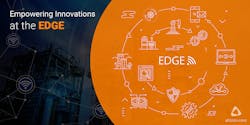Energy conservation saves money. This fact isn't new. What is new is the IoT.
Lots of effort is put into saving energy—use of motion-sensitive bulbs, limited time use of air conditioners, and cutting the number of shifts and functioning hours are some examples. But those actions require productivity/OEE boosting focus of the facility rather than affect energy conservation. Energy conservation is a byproduct of those efforts.
Adding the Internet of Things (IoT), on the other hand, can enable direct energy savings for the smart factory of today.
Many experts recommend IoT-based real-time monitoring systems to bring optimum use of energy. But the issue is more nuanced than that. Sure, real-time monitoring helps you track energy consumption, but that might not lead directly to energy conservation. For that, the real-time energy monitoring should lead to better predictions of energy usage and become a guide to implementing the right load-level energy equipment.
Two Components of Electrical Energy Billing
Let’s take an example of electrical energy. Usually, electrical energy billing has two components: demand charge and runtime/consumption-related charges. Demand load is typically the peak load provided by the electricity service providers from the power grid. This usually has a hard and fast limit. Crossing it will prompt penalties of around 20 times the usual rates.
Avoiding this scenario often comes down to two options: reduce the total load required by the machinery, or ensure that the threshold limit is never reached.
The Problem of Motors
One major source of electricity usage in the plant involves electrical motors and HVAC systems. A motor is considered under-loaded when it’s in the range where efficiency drops significantly with the decreasing load. Most electric motors are designed to run at 50% to 100% of rated load. Maximum efficiency is typically near 75%. Drop below the 50% rated load, and the efficiency tends to lower dramatically.
In many cases, operating motors are either overloaded, resulting in overheating, or under-loaded, working at most at 40% of their capacity. That causes huge spikes in energy consumption. Oversized motors have a higher initial cost and are very expensive to repair and maintain. Undersized motors don't perform well and prompt higher losses than properly sized electric motors. The same goes for air conditioners. If their tonnage and room size or room dynamics aren’t suitable, it leads to higher energy consumption.
Addressing a Wide Range of Energy Consumers
Apart from regular electrical consumption of motors and HVAC, IoT can address numerous energy sources and resources. These include:
- Air compressors—the source of air across plant.
- Boilers that serve as the main source of steam used across plants.
- Backup generators that provide an alternative electricity source in case of failure of the primary.
- Fuel, including diesel, coal, wood, solar, and batteries that are used to run above systems.
How IoT Can Help
In the pre-IoT era, the traditional energy-management system would collect a sample of energy usage at an interval. The traditional system is good to get energy-consumption data, but it doesn’t help you with alerts in case of spikes, curating usage pattern, predicting the seasonal demand, or suggesting appropriate configuration.
Also in the pre-IoT era, the motor load test was a lengthy and cumbersome affair. Engineers used slip tests and electrical tests with a digital stroboscope. They had to spend hours with the equipment to obtain samples. Even then, the data collected was only a sample, and not real time.
With the IoT in place, the analyses can occur on real-time data from the motor. That makes the analysis quick, painless, and more accurate. IoT brings real-time alerts, ability to predict energy demand, usage patterns, and ways to optimize energy consumption.
With the right IoT platform, you can recommend the proper sizing needed for motors, thus saving money on the original investment. IoT-based conditional monitoring ensures the motor never reaches its threshold limit, which means the motor lasts longer and suffers fewer failures.
An IoT-based monitoring system gives early warnings of electric motor vibration/temperature problems. Condition monitoring saves time from unplanned production outages. And the unnecessary stress of carrying out urgent repairs can be avoided.
In addition, a properly designed IoT system can not only track the energy consumption at distribution points throughout a smart factory, but with the help of smart meters, they can track energy consumption right from its source all the way to the consumption point. Moreover, it can help predict leakages or voltage drops at nodes, if any occur.
The ultimate goal of the smart factory is a generating a real-time energy audit that traditional energy monitoring systems can’t provide. IoT-enabled energy monitoring can solve a lot of issues that are core to hindering a plant from real energy conservation efforts. That not only saves money, but paves the way for true implementation of Industry 4.0. If you run a factory and are looking to cut energy costs, then IoT is worth a closer look.
Vinay Nathan is the co-founder and CEO at Altizon Systems, the Industrial IoT Company.



